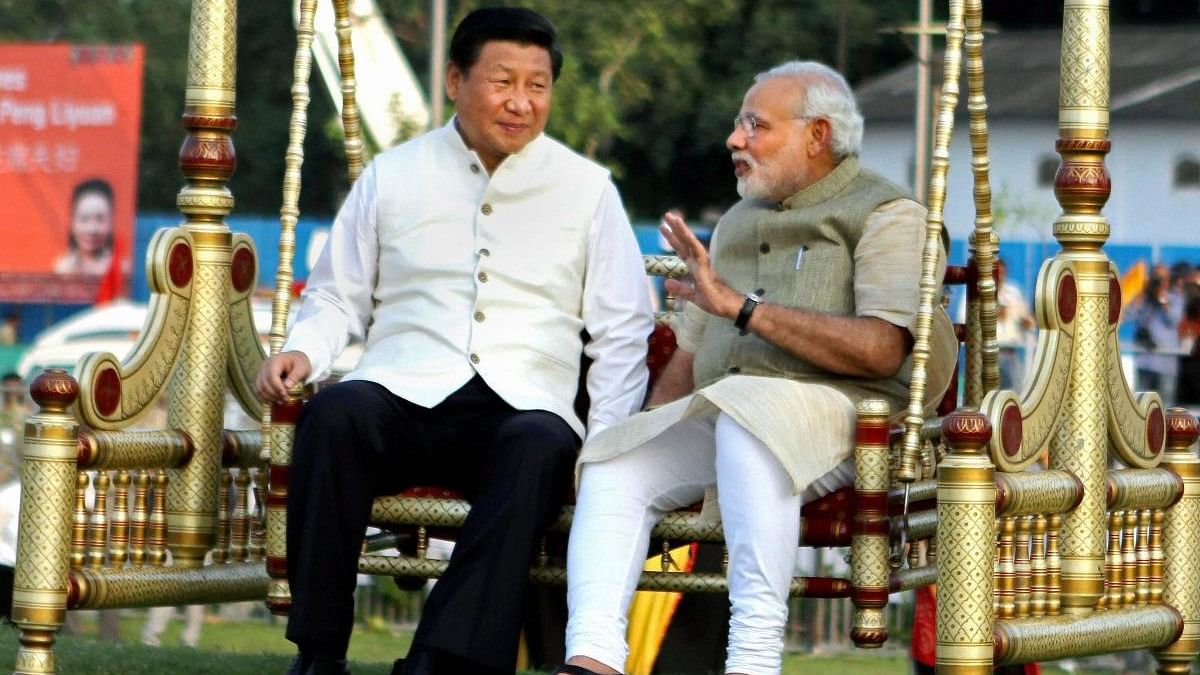
Prime Minister Narendra Modi (right) and Chinese President Xi Jinping (left).
Credit: PTI File Photo
In a predictable act, on August 28, China released official maps which include the whole of Arunachal Pradesh and Aksai Chin as its territory. These ‘updated’ maps were released by the Chinese Ministry of Natural Resources. In April, Beijing had unilaterally changed names of around 11 places in Arunachal Pradesh, a practice which it has been resorting to time and again. External Affairs Minister S Jaishankar termed the Chinese actions as “absurd”. India has also lodged a formal complaint with Beijing.
What is interesting is that Beijing’s actions come close to the G20 Summit which will take place in New Delhi in the first half of September, in which China’s President Xi Jinping is expected to participate. This also comes days after the conclusion of the BRICS Summit in South Africa where the India-China border standoff was discussed on the side lines. Prime Minister Narendra Modi and Xi agreed to “intensify efforts” to work towards a resolution of the ongoing crisis.
This gave some hope that both sides were willing to look for ways to resolve the ongoing military standoff across the border since the June 2020 Galwan Valley clash. Even after 19 rounds of commander level talks there is no real de-escalation in action. However, such tactics prior to the upcoming high-level bilateral meets only underscores the argument that China is keen to push the envelope and challenge India’s claims and confidence.
Such posturing by China is not new. There is a pattern of Chinese behaviour, especially with respect to high-level visits. Every time we have had a top bilateral meet in the last decade, Beijing has managed to stir the border issue. Indian and Chinese armies were engaged in a stand-off in May 2013 right before Li Keqiang’s visit to India. Similar posturing was adopted by Beijing prior to Xi’s visit in 2014 as there were border skirmishes in Chumar sector.
Even as a member of the G20 China had refused to attend meetings which were scheduled in Arunachal Pradesh and Jammu & Kashmir, asserting that these are disputed territories.
Though China has consistently resorted to flaring the border issue right before any high-level discussion, it has become more aggressive under Xi. The government has even passed a new border law in 2022, which calls for both civilian and military bodies to ‘safeguard national sovereignty’. Such laws further intensify the domestic nationalistic agenda and provides a leeway for the government to project an aggressive posture. No surprises here then that the maps also show Taiwan and the disputed territories of the South China Sea as part of China. As per China Daily, “surveying, mapping and geographic information play an important role in boosting the development of the nation…” underscoring that the territories are inalienable part of China.
Such acts complicate the environment in which Xi will be meeting Modi, and fuel mistrust. The release of the maps is a ploy to push India to react and pressure it to retaliate. If it doesn’t, it will be perceived as weak, and if it does, it will be blamed for derailing the discussions —a Catch 22 situation.
When China doesn’t want to make a commitment during negotiations and bilateral manoeuvrings it tends to deflect, and that is what the maps are. It is an act to push India to look for a resolution of the immediate issues rather than successfully talk about the de-escalation of the three years long standoff and border negotiations.
Such a move also caters to Xi’s support base and is a win among the domestic audience. The Chinese economy is not in the pink of its health. India has just achieved a massive success in space exploration. Even if negotiations are taken forward, Beijing does not seem inclined to arrive at a long-term solution.
Such actions only intensify the existing mistrust between the two sides. China will not be ready to move forward on this border issue till it is regarded as the stronger party; and will continue to push such narratives regarding the international border.
(Gunjan Singh is Assistant Professor, OP Jindal Global University)
Disclaimer: The views expressed above are the author's own. They do not necessarily reflect the views of DH.